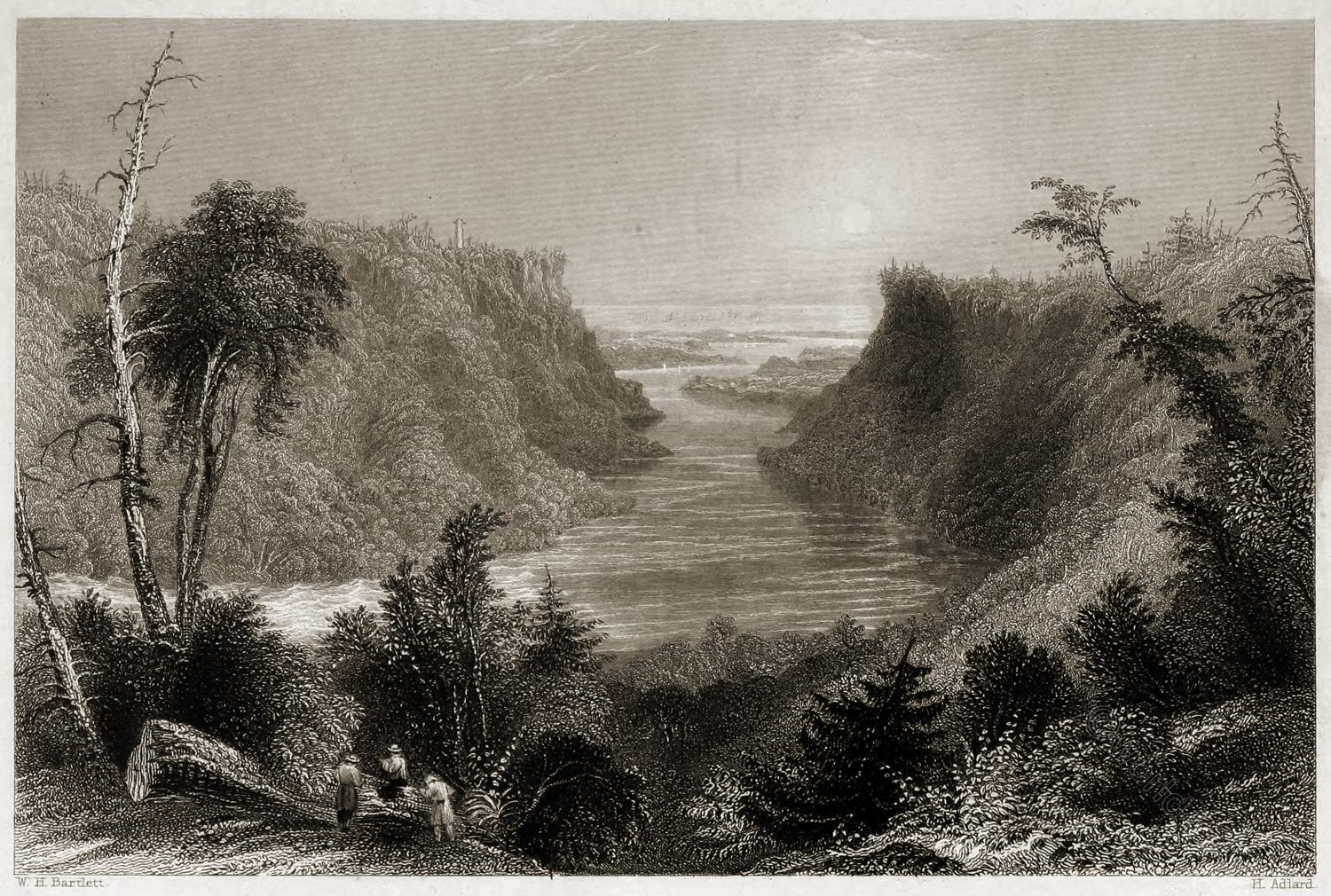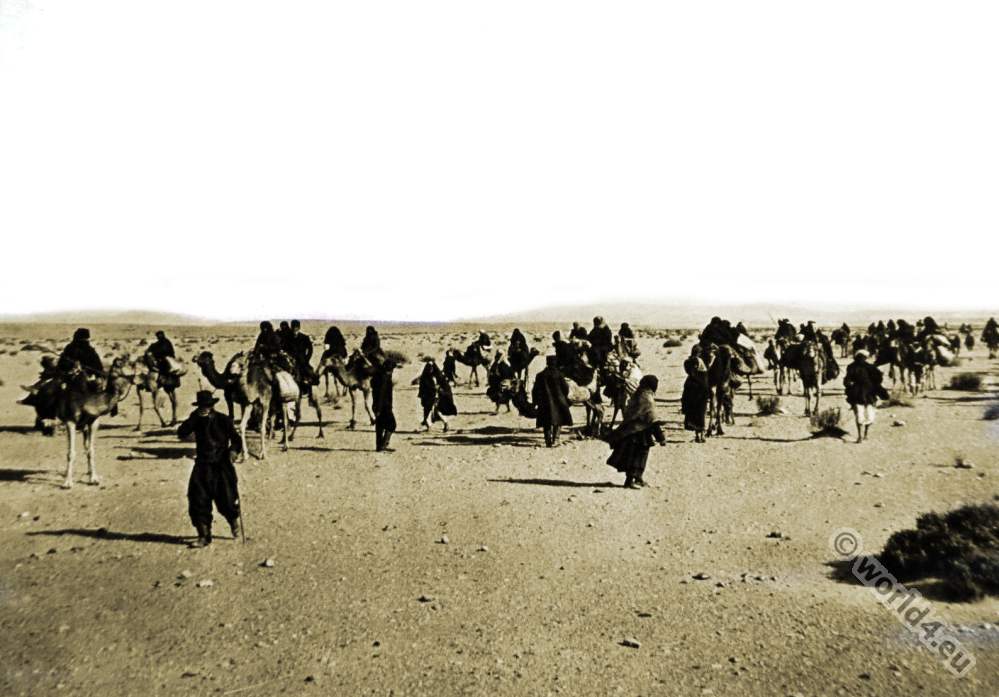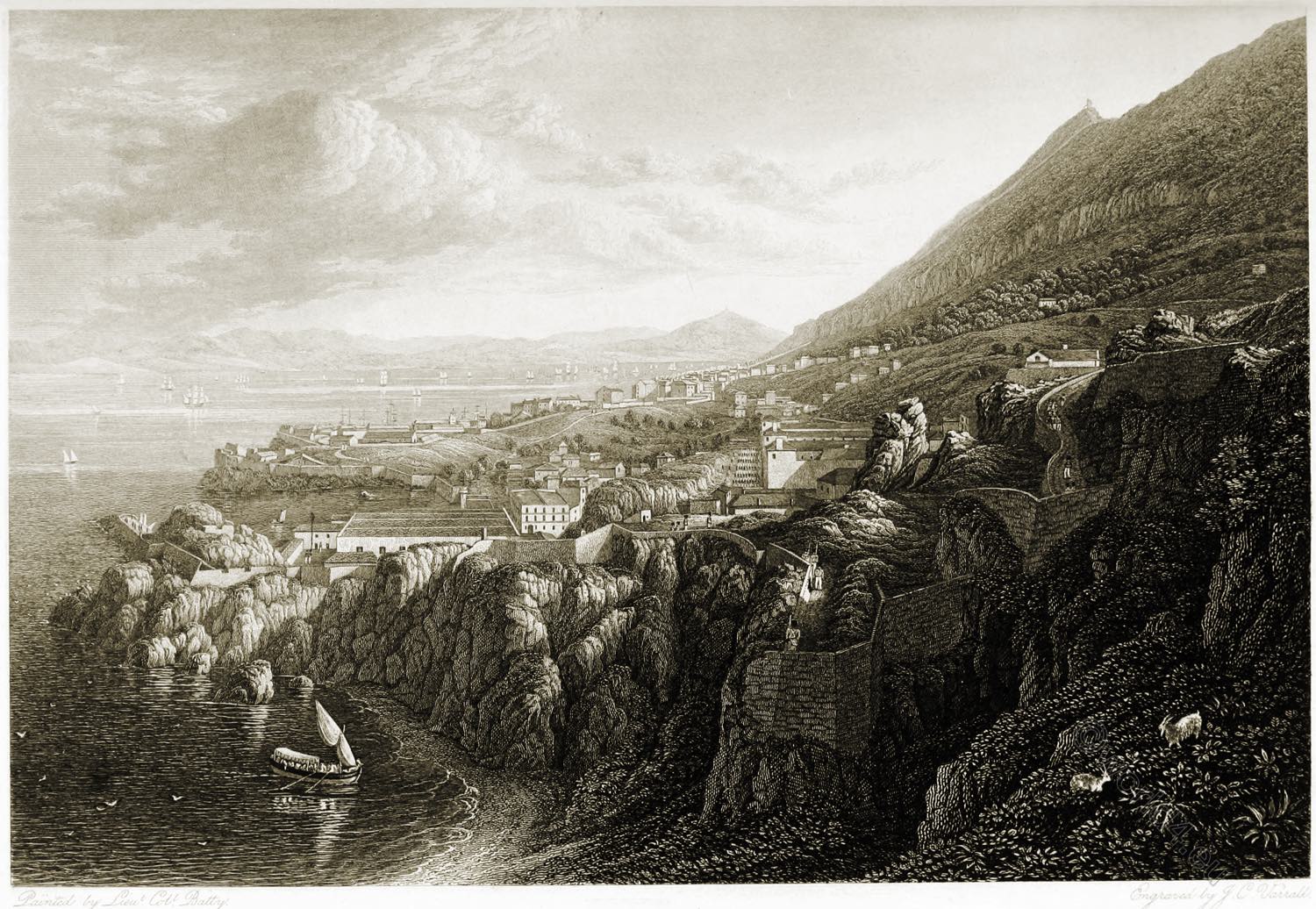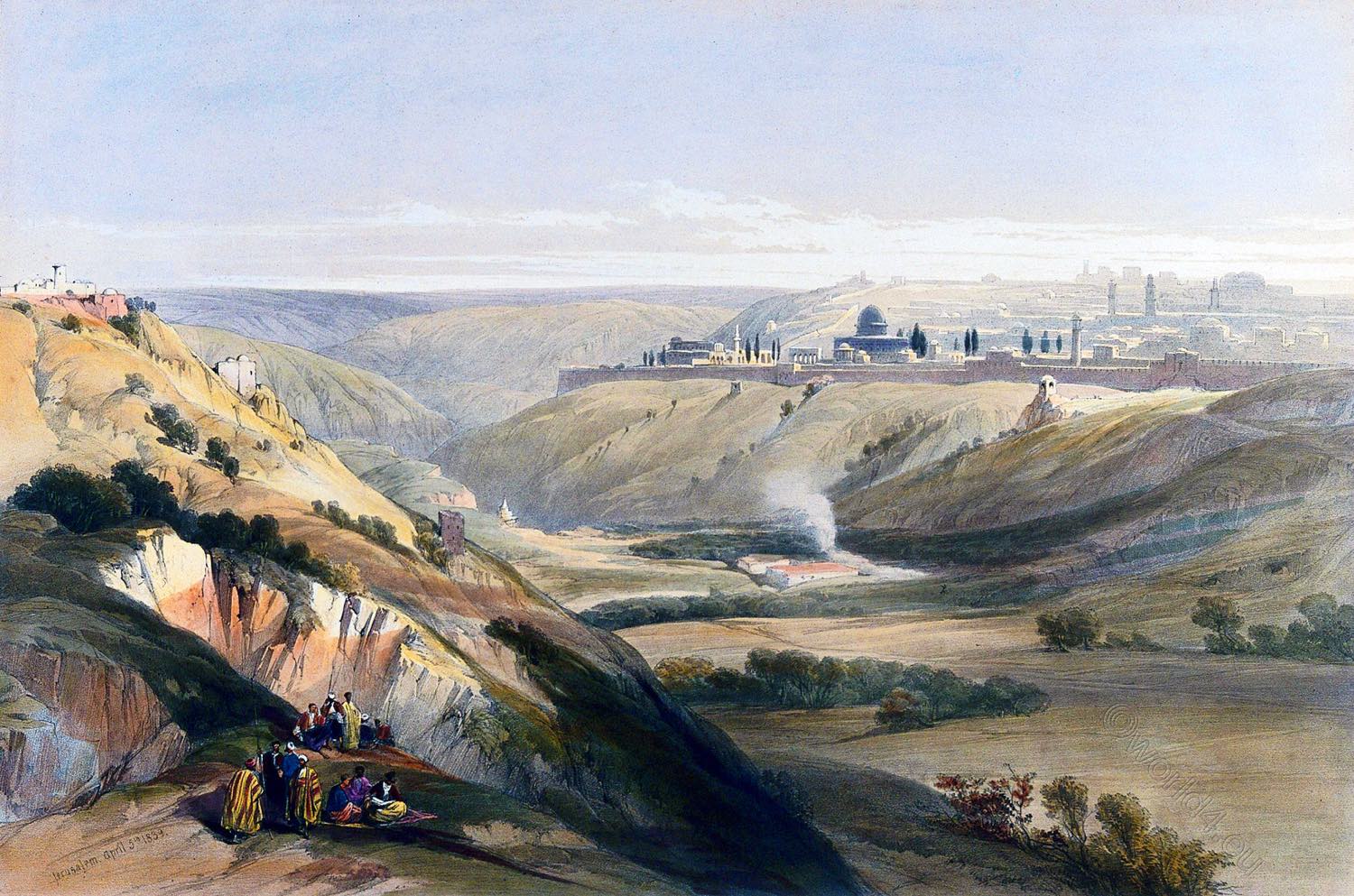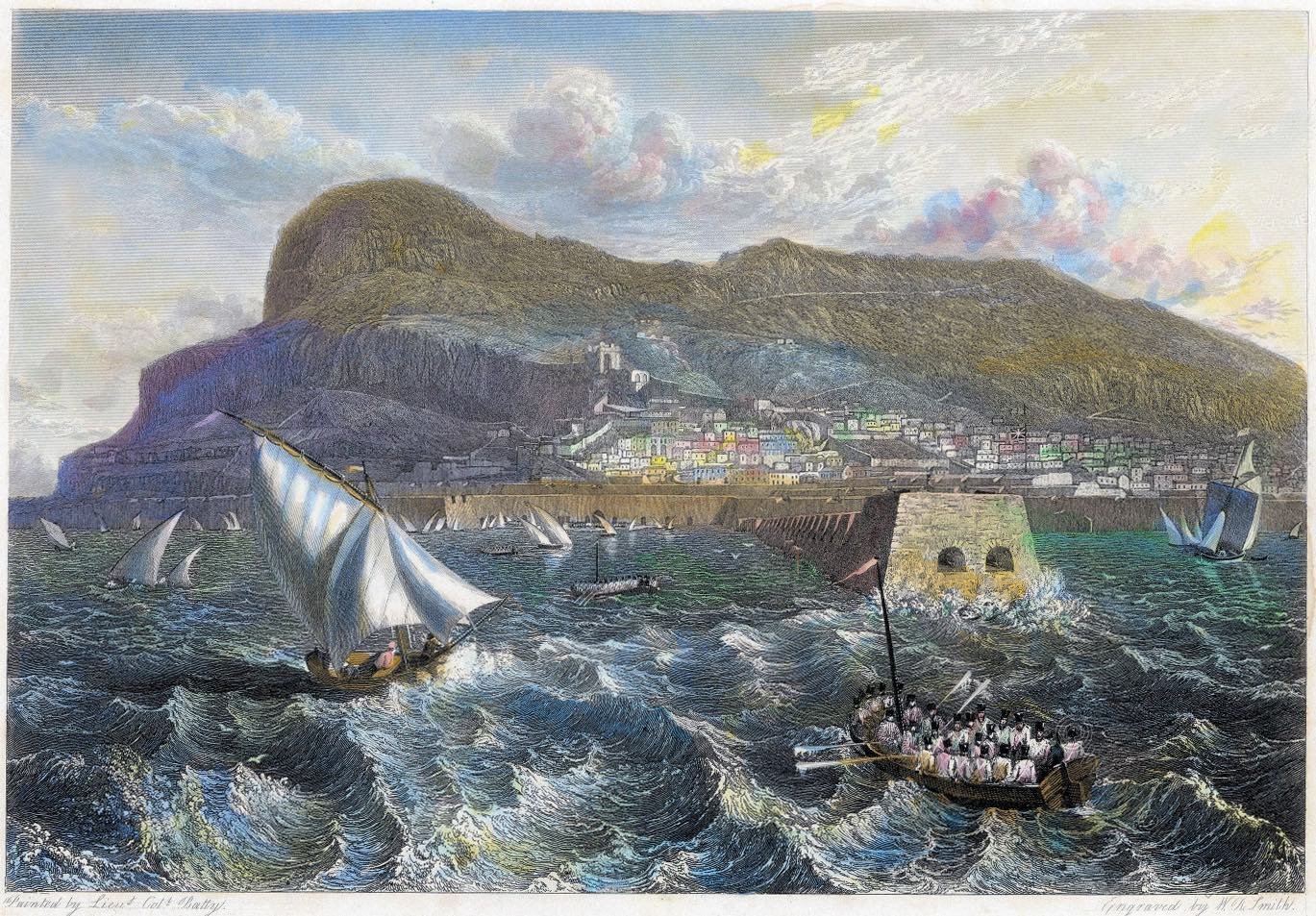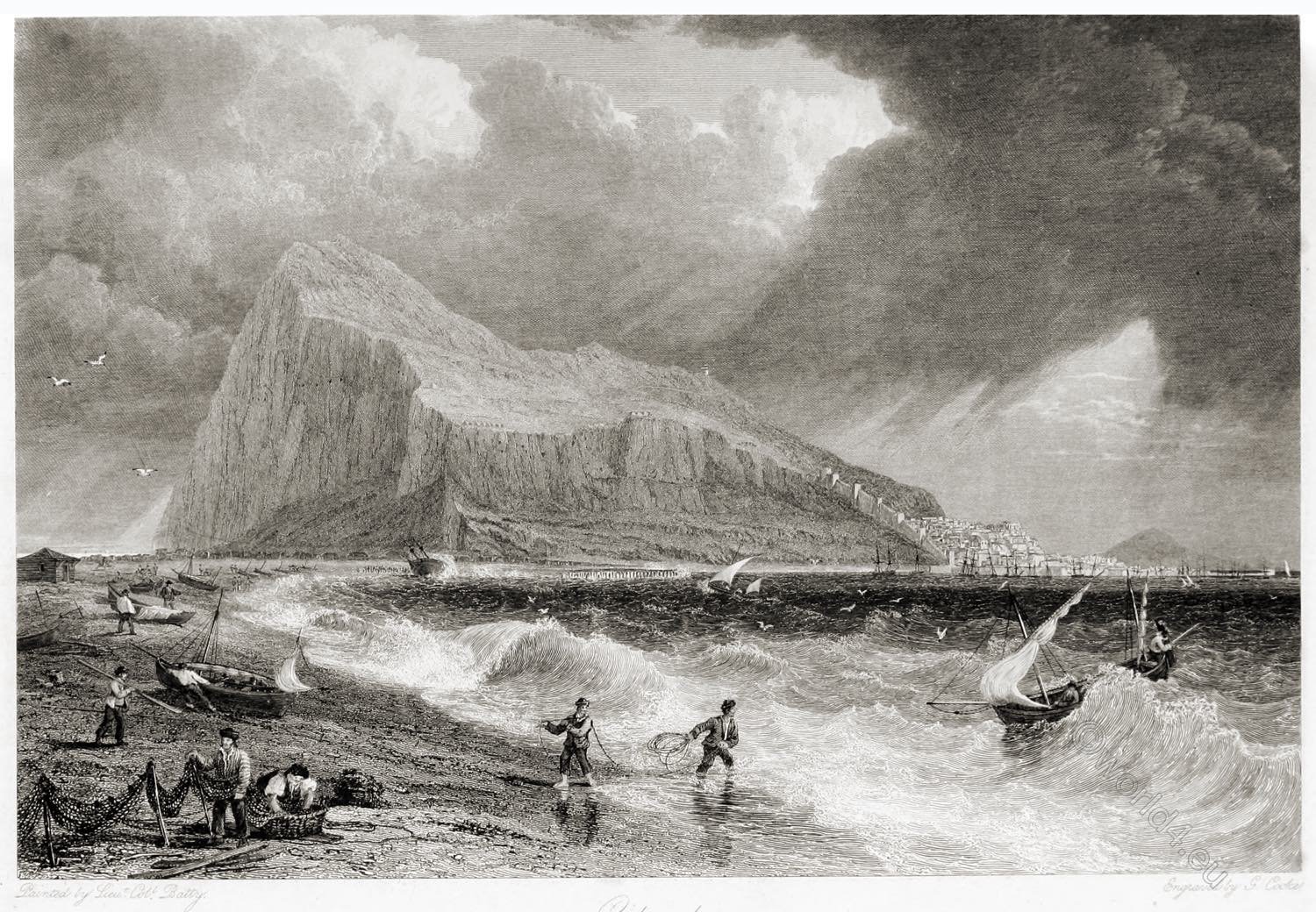
GIBRALTAR. FROM THE BAY SIDE.
We have in the annexed view, the appearance of Gibraltar, as seen when approached by land. The rock rises majestically above the water of the Bay, and the town and castle are seen on the slope at its foot.
In the distance, behind the Mole, the mountains of the Barbary coast rear their lofty heads: the highest is the well-known mountain called Ape’s Hill. In the former view, the northern, and part of the eastern faces of the rock are seen; in this view we have part of the north and west faces.
The direction of the great galleries, or excavations, is indicated by the rows of holes in the face of the rock through which the cannon are pointed. They terminate in two large halls, hewn out of the solid rock, and called St. George’s hall, and Cornwallis’s hall.
The summit of the mountain is marked by then arrow ridge which separates the eastern from the western side. The signal station, about the centre of the ridge, is seen on the remote point. The portion of the isthmus, which appears on the left, is neutral ground. Numerous houses have been built here by the Spaniards employed in the fishing trade; large quantities of the tunney fish being caught in the straits, are here salted and prepared for exportation to the Italian ports.
An immense traffic is carried on by smugglers with the neighboring coast of Spain. The vessels employed for this purpose are securely anchored under the guns of the fortress, whilst the Spanish guarda-costas are stationed a little farther off, constantly watching their movements. As the bay of Gibraltar is open to the south, the anchorage is far from being secure in stormy weather from that quarter; and it often happens on these occasions, that vessels are driven from their anchorage and stranded on the bay side.
Source: Select views of some of the principal cities of Europe by Robert Batty. London: Moon, Boys, and Graves, 1832.
Continuing
GIBRALTAR.
The Rock, from the Mediterranean Shore.
Gibraltar, from the Bay Side.
The Old Mole, from the Anchorage.
Gibraltar, from above Camp Bay.
Discover more from World4 Costume Culture History
Subscribe to get the latest posts sent to your email.

